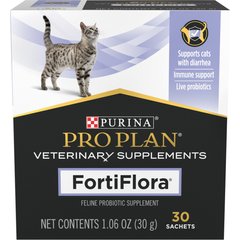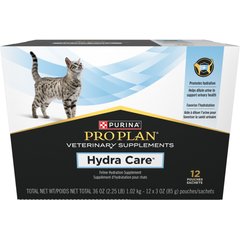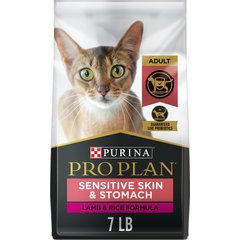Temporomandibular Joint Disorders in Cats
The temporomandibular joint is the hinged point in the jaw that is formed by the temporal and mandible bones, collectively known as the jaw joint. The temporomandibular joint is also frequently referred to simply as TMJ.
There are two temporomandibular joints, one on each side of the face, each one working in concert with the other. TMJ plays a pivotal role in the normal chewing process, and is in fact essential for proper chewing, so that and any disorder of this joint compromises the ability to make normal mouth movements and chew food. An affected animal will feel pain when closing or opening the mouth, or both. Diseases and disorders of the TMJ are referred to as temporomandibular joint disorders.
Symptoms and Types
Vet Recommended Health Support
- Feliway Optimum Enhanced Calming 30 Day Diffuser for Cats$29.99Chewy Price
- Purina Pro Plan Veterinary Diets FortiFlora Powder Probiotic Digestive Supplement for Cats, 30 count$30.99Chewy Price
- Purina Pro Plan Veterinary Diets Hydra Care Liver Flavored Liquid Supplement for Cats, 3-oz pouch, case of 12$14.99Chewy Price
- Purina Pro Plan Adult Sensitive Skin & Stomach Lamb & Rice Formula Dry Cat Food, 7-lb bag$28.08Chewy Price
- Difficulty opening/closing the mouth
- Mandible bone may be out of place and visible form the side of the face (deviation of the mandible bone)
- Pain when chewing food
- Vocalizing, mewing while trying to eat
- Loss of appetite
Causes
- Injury or trauma causing fractures to the joints
- Stress in joint after carrying heavy objects by mouth (might be objects or kittens)
Diagnosis
Most affected cats are presented to their veterinarian with the complaint that they are unable to eat normally. You will need to begin by giving a thorough history of your cat's health, including a background history of symptoms, when the problems first appeared, and whether there have been any previous traumas or injuries involving the mouth or head.
After taking a detailed history, your veterinarian will conduct a complete physical examination on your dog, examining the mouth, bones and the joints in the mouth. Laboratory tests will include a complete blood count (CBC), biochemistry profile, and urinalysis. The results of these tests are often found to be normal, especially if no other concurrent disease is present.
X-rays remain a valuable tool in the diagnosis of TMJ disorders, and your doctor will be likely to use this type of imaging to get a better view of the bones and joints in the face. Magnetic resonance imaging (MRI) can be used as well, and can give a better, more detailed view that standard X-ray. If your veterinarian has an MRI machine in the clinic, this may be the recommended image technique. If something more severe is suspected, such as infection or tumor, your veterinarian may also take a small sample from the muscle tissue of the jaw so that other diseases that can cause similar symptoms can either be confirmed or ruled out.
Treatment
Treatment for TMJ disorders is two-fold and is aimed at eliminating or altering the underlying cause as well as treating the symptoms. In case of complete dislocation of the TMJ, your veterinarian will try to repair it by placing an object at a specific site close to the joint, and gently closing the mouth with a push in order to reduce the dislocation. If this method does not work well or the problem becomes chronic, surgery may be required to correct the defect. Pain killers will also be given to reduce the pain related these disorders. Muscle relaxing drugs may also be prescribed, if need be, to reduce the muscle tension created as a result of the TMJ disorder.
Living and Management
This condition can be very painful, and regular pain relieving drugs may be required until the symptoms have resolved completely. Your veterinarian may also use a feeding tube to give your cat its required nutrients, especially if your cat is unable to take adequate amounts of food through its mouth alone. Your veterinarian will also brief you on the correct use of the feeding tube at home and the best ways to prepare the food so that you can take your cat home to recover in relative comfort and quiet.
After surgery, you should expect your cat to feel sore. Your veterinarian will give you pain medication for your cat to help minimize discomfort, and you will need to set up a place in the house where your cat can rest comfortably and quietly, away from other pets, active children, and busy entryways. Setting the cat litter box and food dishes close by will enable your cat to continue to care for itself normally, without exerting itself more than necessary. Use pain medications with caution and follow all directions carefully; one of the most preventable accidents with pets is overdose of medication.



